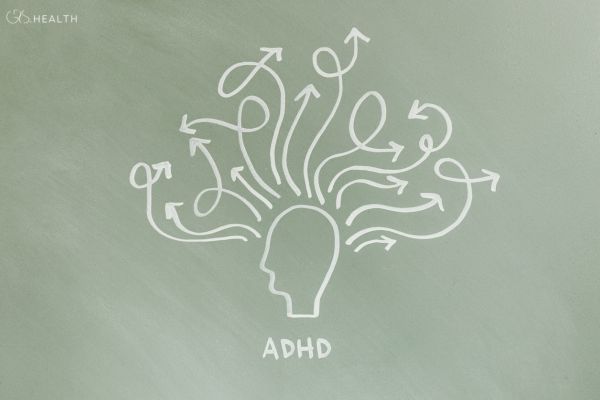Attention-Deficit/Hyperactivity Disorder (ADHD) is one of the most common neurodevelopmental conditions, affecting both children and adults across the globe. According to the Centers for Disease Control and Prevention (CDC), millions of children are diagnosed with ADHD in the United States alone, with many continuing to experience symptoms into adulthood. Recognizing the signs and symptoms of ADHD is essential, as early detection and management can significantly improve quality of life, academic performance, and social functioning.
In this article, we will explore the scientifically validated signs and symptoms of ADHD in children and adults, examine diagnostic criteria, discuss related features, and emphasize when to seek professional help.
What is ADHD?
ADHD, or Attention-Deficit/Hyperactivity Disorder, is characterized by persistent patterns of inattention, hyperactivity, and impulsivity that interfere with daily functioning. The disorder is classified as a neurodevelopmental condition, often emerging in childhood and potentially persisting into adulthood.
While the causes of ADHD are multifactorial, research indicates that genetic influences, brain structure differences, and neurotransmitter imbalances play major roles. The condition primarily involves dysfunction in brain regions responsible for executive function, such as the prefrontal cortex.
Understanding the signs and symptoms of ADHD requires acknowledging that ADHD is not simply about being easily distracted or energetic—it is a chronic and impairing condition that affects cognition, behavior, and emotional regulation.

Diagnostic Criteria for ADHD
The Diagnostic and Statistical Manual of Mental Disorders (DSM-5) outlines strict criteria for diagnosing ADHD. To receive a diagnosis, symptoms must:
Persist for at least six months.
Be inconsistent with developmental level.
Appear in two or more settings (home, school, workplace).
Cause clinically significant impairment in social, academic, or occupational functioning.
Symptoms are divided into two main categories:
Inattention
Hyperactivity and impulsivity
A child under 16 must display six or more symptoms from either category, while adolescents (17+) and adults require at least five symptoms.
Signs and Symptoms of ADHD in Children
Inattention in Children
Children with ADHD often struggle with focus and organization. Key signs include:
Difficulty sustaining attention during tasks or play.
Frequent careless mistakes in schoolwork.
Forgetting daily activities, such as chores or homework.
Trouble following instructions and completing tasks.
Avoiding tasks requiring prolonged mental effort.
These signs and symptoms of ADHD are especially evident in structured settings such as classrooms, where sustained focus is expected.
Hyperactivity and Impulsivity in Children
Some children show excessive physical restlessness and impulsive behaviors, such as:
Fidgeting, tapping hands or feet, or squirming in seats.
Running or climbing in inappropriate situations.
Inability to engage in quiet play.
Talking excessively.
Blurting out answers before questions are finished.
Interrupting conversations or games.
Emotional and Social Difficulties
Beyond core symptoms, many children with ADHD struggle with emotional regulation. This can manifest as:
Frequent temper outbursts.
Intolerance of frustration.
Difficulty making and maintaining friendships.
These challenges highlight that the signs and symptoms of ADHD extend beyond academics and affect social-emotional development.

Signs and Symptoms of ADHD in Adults
ADHD is not confined to childhood. Research shows that up to 60% of children with ADHD continue to experience symptoms into adulthood.
Inattention in Adults
Adults with ADHD may exhibit:
Chronic disorganization at work and home.
Poor time management and frequent procrastination.
Forgetfulness in daily tasks (bills, appointments).
Trouble sustaining focus during meetings or conversations.
These signs and symptoms of ADHD often cause professional difficulties, affecting career progression and workplace stability.
Hyperactivity and Impulsivity in Adults
Unlike children, adults with ADHD may not display overt physical hyperactivity. Instead, it appears as:
Persistent restlessness or feeling “on edge.”
Talking excessively in social or professional settings.
Frequently interrupting others or dominating conversations.
Impulsive decision-making, such as reckless spending.
Emotional Dysregulation in Adults
A key but often overlooked symptom cluster is emotional instability, which includes:
Difficulty managing stress.
Intense mood swings.
Low frustration tolerance.
These emotional patterns further demonstrate how the signs and symptoms of ADHD impact multiple aspects of adult life, from relationships to financial stability.
Impact of ADHD Symptoms Across Settings
For a diagnosis to be valid, the signs and symptoms of ADHD must impair functioning in two or more environments. For example:
At school: declining grades, incomplete assignments.
At work: missed deadlines, poor productivity.
At home: frequent conflicts, inability to follow household routines.
Socially: difficulty maintaining friendships due to impulsivity.
This cross-situational impairment is one of the hallmarks that distinguishes ADHD from occasional inattentiveness or restlessness.
Associated Features of ADHD
Executive Dysfunction
Many individuals with ADHD experience executive dysfunction, which refers to problems with planning, organization, and goal-directed behavior.
Emotional Dysregulation
Emotional dysregulation is strongly associated with ADHD, leading to difficulties managing anger, sadness, or frustration.
Hyperfocus
Interestingly, some individuals display hyperfocus—an intense concentration on activities of interest, which paradoxically coexists with distractibility.
Comorbid Conditions
ADHD commonly coexists with:
Anxiety disorders.
Depression.
Learning disabilities.
Oppositional defiant disorder (ODD).
Recognizing these associated features is crucial, as they can complicate both diagnosis and treatment.
When to Seek Help
If the signs and symptoms of ADHD are persistent, occur across multiple settings, and significantly impair quality of life, professional evaluation is essential.
Parents should consult pediatricians or child psychologists if their child consistently struggles with attention and impulse control. Adults who suspect ADHD should consider a mental health evaluation, ideally by a psychiatrist or clinical psychologist.
It is also important to remain cautious of misinformation—especially from social media platforms like TikTok, where oversimplified or inaccurate ADHD self-diagnosis is common. Seeking evidence-based evaluation ensures accurate diagnosis and effective treatment.
Conclusion
The signs and symptoms of ADHD are complex, diverse, and often misunderstood. ADHD is not merely about being easily distracted or overly energetic; it is a neurodevelopmental condition that impacts academic performance, workplace productivity, and personal relationships.
Recognizing early indicators—whether in children who struggle with classroom tasks or adults who face workplace disorganization—is the first step toward effective management. Professional evaluation and intervention can transform outcomes, reducing impairments and enhancing well-being.
By understanding the signs and symptoms of ADHD, we can better support those affected, reduce stigma, and promote healthier coping strategies.
Sources
- American Psychiatric Association, Diagnostic and Statistical Manual of Mental Disorders
- National Institute of Mental Health (NIMH), Attention-Deficit/Hyperactivity Disorder
- Verywell Health, How Do You Know If You Have ADHD? 10 Ways to Tell










